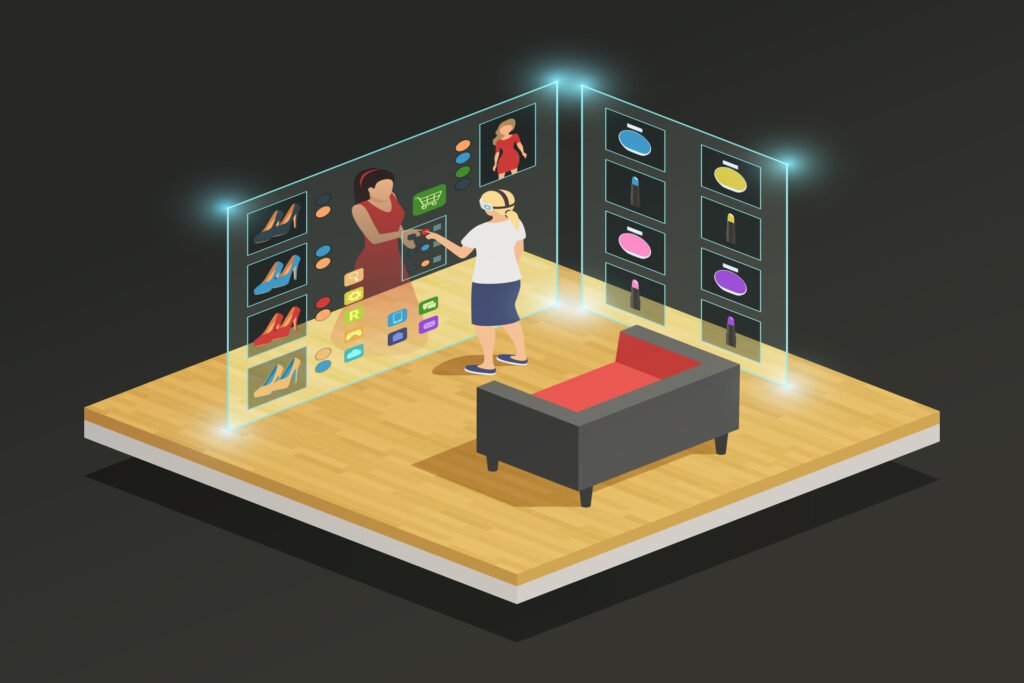In the ever-evolving landscape of online shopping, one innovation has risen to the forefront, promising to transform the way we buy clothes online: Virtual Fitting Rooms. These virtual marvels are reshaping the online shopping experience, offering consumers a more personalized, convenient, and confident way to shop for clothing. In this article, we’ll explore the incredible world of virtual fitting rooms, how they work, their benefits, and why they are gaining popularity among shoppers worldwide.

The Frustration of Online Clothing Shopping
Online shopping has undoubtedly made our lives more convenient, allowing us to shop from the comfort of our homes, avoid long checkout lines, and access a wide variety of products. However, when it comes to buying clothing online, there has always been a significant hurdle: the inability to try before you buy. The traditional online shopping experience lacks the tactile element of trying on clothes, leading to uncertainty about size, fit, and style.
This frustration has led to a high rate of returns in the fashion industry, with many shoppers ordering multiple sizes or styles and sending back what doesn’t work. Not only is this process time-consuming, but it also adds to the environmental impact of e-commerce, contributing to excessive packaging waste and transportation emissions.
Virtual Fitting Rooms: Bridging the Gap
Virtual fitting rooms, also known as virtual try-on or AR (augmented reality) fitting rooms, are the solution to this dilemma. They leverage cutting-edge technology to create a dynamic and interactive online shopping experience. Here’s how they work:
- Body Scanning: Some virtual fitting rooms use advanced body scanning technology to create a 3D model of your body. This model takes into account your unique measurements, allowing for a highly accurate virtual representation.
- AR Mirrors: Once your 3D model is created, AR mirrors superimpose clothing items onto your virtual self in real time. You can see how the clothes fit, move, and look from various angles, providing a remarkably realistic preview.
- Customization: Virtual fitting rooms often allow you to customize clothing items by adjusting size, color, and style, ensuring you find the perfect match.
The Benefits of Virtual Fitting Rooms
- Accurate Sizing: Virtual fitting rooms eliminate the guesswork associated with online sizing charts. With your 3D model, you can confidently select the size that suits you best, reducing the likelihood of returns.
- Enhanced Personalization: These virtual tools take personalization to a whole new level. You can experiment with different outfits, mix and match styles, and find the perfect look for any occasion.
- Time and Money Savings: Say goodbye to endless trips to the post office for returns. Virtual fitting rooms help you make informed decisions, reducing the need for multiple purchases and returns.
- Eco-Friendly Shopping: By minimizing returns, virtual fitting rooms contribute to a more sustainable fashion industry by reducing waste and carbon emissions associated with shipping and returns.
- Improved Confidence: Shopping for clothes can be a boost to your self-esteem. When you see how fantastic you look in virtual clothing, you’re more likely to feel confident in your choices.
The Rising Popularity
Virtual fitting rooms are quickly gaining popularity among online shoppers for several reasons:
- Pandemic-Driven Demand: The COVID-19 pandemic accelerated the adoption of online shopping. Virtual fitting rooms emerged as a valuable tool for consumers who couldn’t visit physical stores during lockdowns.
- Advancements in Technology: The technology behind virtual fitting rooms has become more accessible and affordable, making it easier for retailers to integrate these solutions into their websites and apps.
- Brands Embracing AR: Leading fashion brands and retailers are increasingly incorporating virtual fitting rooms into their online shopping experiences. This trend signals a growing acceptance of this technology.
- Positive User Experiences: Early adopters have reported positive experiences with virtual fitting rooms, including increased satisfaction with their online purchases and reduced return rates.
- Social Media Integration: Some virtual fitting room apps and websites allow users to share their virtual try-ons on social media platforms, creating a sense of community and encouraging others to try the technology.
Challenges and Future Developments
While virtual fitting rooms hold great promise, they are not without challenges. One notable concern is the accuracy of body scanning technology and the potential for privacy breaches. Addressing these issues will be crucial for widespread adoption.
In the future, we can expect virtual fitting rooms to become even more sophisticated. This might include:
- AI-Powered Recommendations: AI algorithms could suggest clothing items based on your style, preferences, and past purchases.
- Improved Body Scanning: Enhanced accuracy in body scanning technology will further reduce sizing errors and enhance the virtual try-on experience.
- Virtual Shopping Assistants: Virtual chatbots or assistants that help you navigate the virtual fitting room and offer style advice.
Conclusion
Virtual fitting rooms are revolutionizing the online shopping experience, offering a solution to one of the most significant challenges of buying clothes online: the inability to try them on. By providing accurate sizing, enhanced personalization, and a more eco-friendly shopping process, virtual fitting rooms are reshaping the way we shop for fashion.
As this technology continues to evolve and gain popularity, we can expect a future where online clothing shopping is not only convenient but also a highly engaging and satisfying experience. So, next time you shop for clothes online, consider giving virtual fitting rooms a try and unlock a new level of confidence and convenience in your shopping journey.

